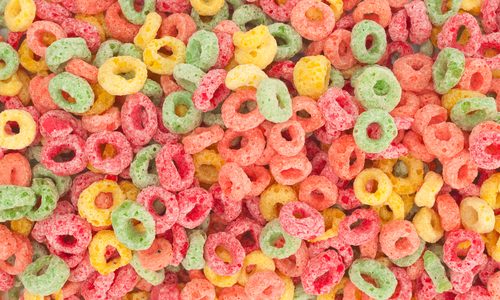“Ultra-processed food may be linked to cancer”

I love an attention-grabbing headline and this one was provocative enough to make various journalists and broadcasters give it prominent column inches and quite a bit of airtime. Some even sought out the opinion of various well respected media foodies. That these fellows mostly dismissed the headline as scaremongering made me want to scratch a bit deeper and see what sort of study had reached this conclusion.
The claim that ‘ultra-processed’ foods are associated with a greater incidence of cancer was based on the findings of a French epidemiological study published in the BMJ, and such a well respected journal in itself might appear to lend the claim some gravitas.
But first some background: according to some recent national surveys, ultra-processed food products now contribute between 25% and 50% of the total energy (food) intake in the average western diet. Similar, but smaller studies in Canada and the USA, have determined that the nutritional quality of diets could be improved by decreasing their content of ultra-processed food products. But whilst they agree that ultra-processed foods are nutritionally inferior, they did not look for any association with cancer.
But what exactly does ultra-processed mean? The French researchers used the recently designed NOVA classification of food products, which states: “(ultra-processed foods) are not modified foods, but formulations, mostly of cheap industrial sources of dietary energy and nutrients plus additives, using a series of processes”. Note the word formulations. This is not a case of taking a natural ingredient like a potato and turning it into a leek and potato soup. That soup might constitute a minimally processed food, but not an ‘ultra-processed’ one, which according to the NOVA classification, are known to contain most of the following: added salt and sugar, more fats, less fibre, less vitamins, plus known carcinogens from any heat treatment used, as well as potential hormone disrupting chemicals, like Bisphenol-A, from food contact with any plastic packaging. And lastly, food additives of the sort used in reconstituted meats (sodium nitrite or titanium dioxide), preservatives, artificial flavourings, non-sugar sweeteners, hydrogenated oils, and processes including hydrolysis, moulding, reshaping and extruding. Mmmm, sounds delicious.
So how did the French study arrive at the finding, that linked such foods to a higher incidence of cancer? This was the first to take such a large population, (over 100,000 adults), record their typical consumption of any of 3,300 different food products, over 3 random 24 hour periods (6 months apart), to determine their style of eating, and then follow them for the next 2 years, whilst investigating all reported primary cancers diagnosed between the inclusion dates.
By my book, this is still a short time period to assess dietary effects on disease incidence, but their findings still showed that a 10% increase in the proportion of ultra-processed foods consumed, was associated with a significant increase (of more than 10%), of the risk of developing many cancers. It did not attempt to identify the mechanistic cause, neither did it rank in order of culpability the varying components or characteristics of ultra-processed foods. It did not demonise any one factor, but found an association with cancer from the collective group. It is also worth bearing in mind that other lifestyle factors can also further increase one’s risk, like smoking, lack of exercise and poor sleep. But it’s the size of the study, over 100,000 people assessed, that makes one sit up, take note and possibly not dismiss it.
I like to view risk of lifestyle-related disease in terms of a health bank. Over time we’re effectively managing a balance of credits and debits according to our choices. Credits being: taking exercise; eating plenty of whole foods (if it ‘grew’ or was ‘alive’); cooking (mostly) from scratch; preferably organic to minimise exposure to growth hormones and pesticides; and sleeping well. If we do all those things fairly regularly, we’re investing in our health. The debits in our health bank being (to minimise): hydrogenated fats; high levels of added sugar; ultra-processed foods; and heating foods in plastics (exposing us to hormone disrupting chemicals). Because minimising the debits as much as possible, whilst inputting a healthy balance of credits means you can always buffer a few of those unavoidable debits without stressing. Who wants to be a perfect Mary Poppins anyway? The goal is to extend the healthy life-span line well into old age, without getting obsessed!
Monteiro CA et al., (2018) The UN Decade of Nutrition, the NOVA food classification and the trouble with ultra-processing. Public Health Nutr. 21(1):5-17.
BMJ 2018;360:k322 (online) http://www.bmj.com/content/360/bmj.k322
